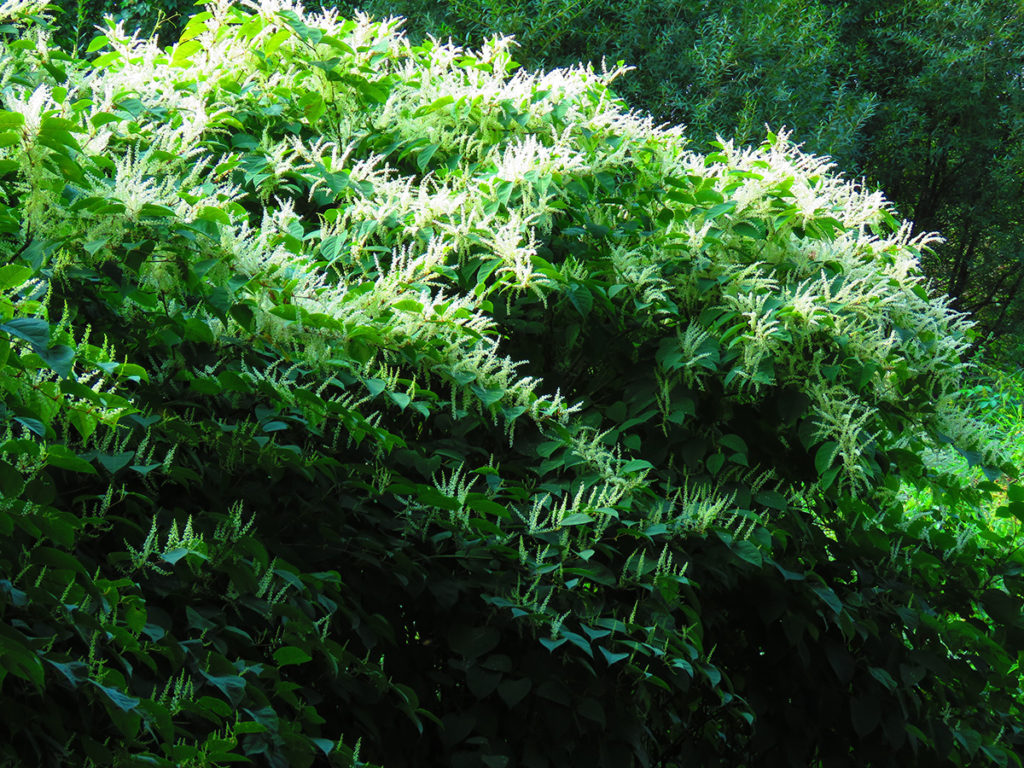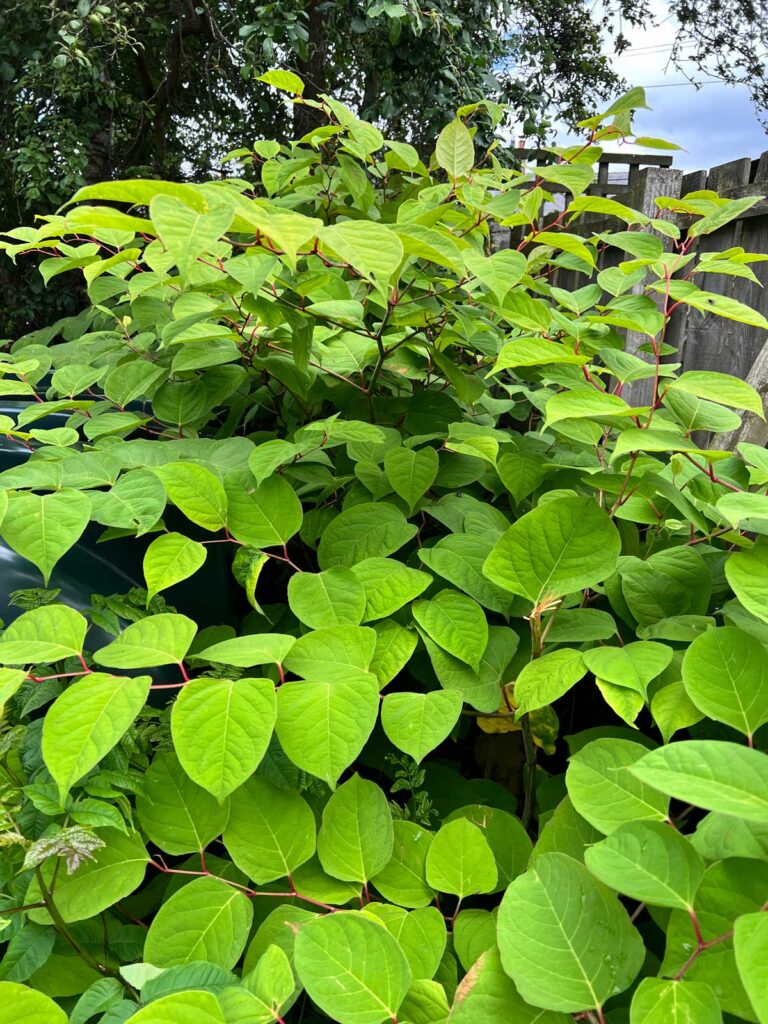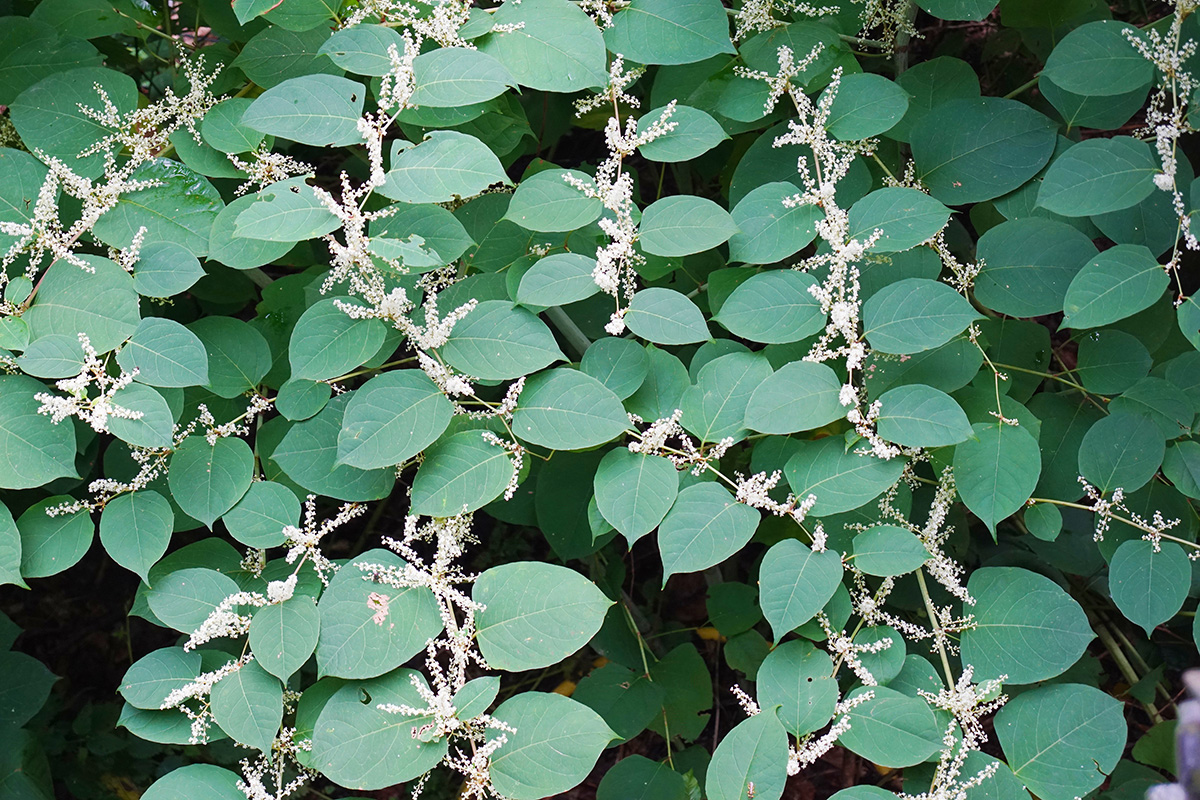Identifying Japanese Knotweed (reynoutria japonica) is crucial because it is an invasive plant species that can cause significant damage to ecosystems and structures.
Here are some key characteristics to help you identify Japanese Knotweed:
Bamboo-like Stems: Japanese Knotweed has hollow, bamboo-like stems that are usually green with purple speckles. The stems are also segmented and can grow quite tall, often reaching heights of 6 to 10 feet (1.8 to 3 metres).
Heart-Shaped Leaves: The leaves of Japanese Knotweed are distinctively shaped like hearts or shields. They are typically medium to dark green, arranged alternately along the stem, and have a pointed tip. The leaves are also usually around 4-6 inches (10-15 cm) long.
Reddish-Purple Shoots: In early spring, new shoots emerge, and these are often reddish-purple or pink in colour. They grow rapidly and can reach their full height within a matter of weeks.
Clusters of Small, Creamy-White Flowers: Japanese Knotweed produces small, creamy-white flowers in late summer to early autumn. These flowers are arranged in clusters or panicles at the ends of the stems.



Fruit and Seeds: After flowering, Japanese Knotweed produces small, winged seeds. These seeds are often not the primary means of spread; the plant more commonly spreads through its extensive underground rhizome system.
Aggressive Growth: Japanese Knotweed is known for its aggressive growth. It can quickly colonize an area, displacing native plants and causing damage to structures, such as building foundations and roads.
Distinctive Rhizomes: Underground, Japanese Knotweed has a network of thick, fleshy rhizomes that can extend several meters from the plant. These rhizomes are the main means of reproduction and expansion for the plant.
Late Winter Dieback: In late winter, Japanese Knotweed dies back, and the above-ground stems become dry and brown. However, the rhizomes remain alive and can produce new shoots in the spring.
Typical Locations: Japanese Knotweed is often found near water bodies, roadsides, construction sites, and disturbed areas. It can thrive in a variety of soil types.
When trying to identify Japanese Knotweed, it’s essential to be thorough and consult with a accredited specialist if you are uncertain. Mistaking it for a harmless plant can lead to unintentional spread and further infestation.
If you suspect you have identified Japanese Knotweed on your property or in your area, it’s crucial to take appropriate measures to manage and control its spread, as it can be challenging to control and eradicate once established.
If you’ve an issue with Japanese knotweed and need advice on how best to remediate an issue or need a survey conducting, contact us here.












